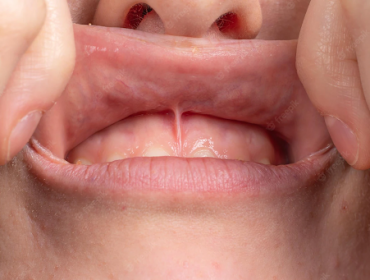Which STD’s Infect the Mucous Membranes
Introduction
Mucous membranes are the thin, moist linings that surround various parts of your body. These include your mouth, nose, eyes, genitals and anus. Mucous membranes are also found in the lungs, digestive tract and urethra (the tube that carries urine out of your body).
Mucous membranes are the thin, moist linings that surround various parts of your body.
Mucous membranes are the thin, moist linings that surround various parts of your body. They line the cavities (cavities are hollow spaces) that contain your internal organs and hold them in place. These cavities include the mouth, nose, throat (pharynx), and vagina.
Mucous membranes also line many openings in your skin including:
- the anal opening (opening at the end of a person’s digestive tract)
- the rectum (lower part of the large intestine)
- the urethra (tube through which urine passes from bladder to outside)
Most STIs can be passed through mucous membranes.
The mucous membranes are the thin, moist linings that surround various parts of the body. They’re the surfaces that come in contact with the body fluids of others, including:

- Eyes
- Ears
- Mouth
- Anus
5 mucous membranes where STIs are passed
In this article, we’ll take a look at five mucous membranes where STIs are passed and cover the specific STIs that can pass through these membranes.
- Mouth (oral cavity)
- Anus (rectum)
- Vagina (vaginal canal)
- Cervix (lower part of uterus connecting to the vagina)
The cervix
The cervix is the lower end of your uterus, which is a muscular and hollow organ that connects to your vagina. The cervix also serves as an opening for blood to pass through during menstruation. The cervical mucous membranes are the thin, moist linings that surround this passage.
Infections that occur at this site include genital herpes, chlamydia and gonorrhea.
The penis
Chlamydia is a bacterial STD that usually affects mucous membranes, such as the penis and cervix. It’s estimated that 1 in 4 sexually active people between the ages of 14 to 49 have chlamydia.
Chlamydia is easily treated with antibiotics, but if left untreated it can cause serious damage to the reproductive system.
The urethra
The urethra is the tube that carries urine from your bladder to the outside of your body. It’s a mucous membrane, which means that it’s made up of tissue that protects and lines the inside of your body. The urethra is also one of the most common sites where STIs are passed—up to 50% of people with gonorrhea have no symptoms!
The vagina
The vagina is the most common site for chlamydia. The cervix, the opening of the uterus, can also be infected with chlamydia.
Chlamydia can cause a burning sensation during urination and a yellowish discharge from the vagina.
The rectum/anus
The rectum is the last part of the large intestine. It is located just above the anus and below your pelvic bone. The rectum contains a mucous membrane, which is a moist tissue that covers several internal organs including those in your reproductive tract and digestive tract. The rectal lining helps protect you from disease by producing mucus to trap any microorganisms (such as bacteria).
The rectum has no barrier between it and your bloodstream like other parts of your body do. This means that any infections or germs that enter through this area can spread quickly throughout your body if left untreated.
A bacterial STD that usually affects mucous membranes is chlamydia.

Chlamydia is a bacterial infection that can be passed through mucous membranes. It is one of the most common sexually transmitted diseases (STDs) in the United States and can cause infertility, pelvic inflammatory disease, rectal infections, and eye infections in both men and women. While chlamydia can occur in both sexes at any age, it is most commonly seen in young people between 15 and 24 years old.
If you are sexually active with more than one partner—or if you have had multiple sex partners—you should get tested for STIs every year.
Conclusion
There are many STIs that can be passed through mucous membranes, but they all have one thing in common: they cause a lot of problems. If you think you have any symptoms of an STI or STD, contact your doctor immediately!
Medically Reviewed by J. Frank Martin JR., MD on July 7, 2022
Secure and Confidential
STD testing services
The fastest results possbile - available in 1 to 2 days

Tagged
Categorized As
Author: Esther Jordan
Esther Jordan has been a writer ever since she can remember. She has always loved the free gift of self-expression through journaling, creating stories, and sharing life experiences in front of audiences. Public speaking and creating content has been a strong suit of hers since high school. Immediately after college, she received a paid position as an search engine optimization (SEO) writer in 2010 when SEO was still a very brick and mortar concept for a lot of small businesses. It was a time of do-it-yourself websites and online magic that everyone wanted and either referred to it as SEO or pay-per-click (PPC).




